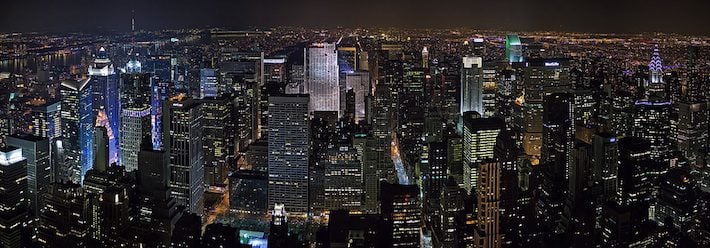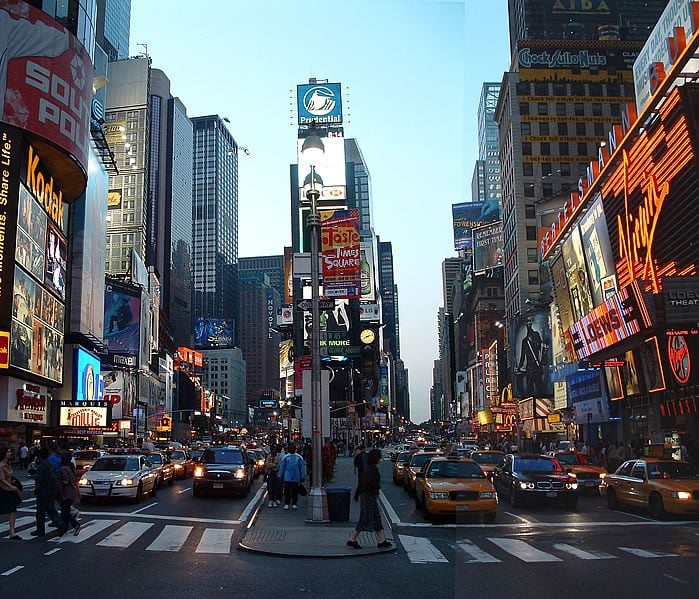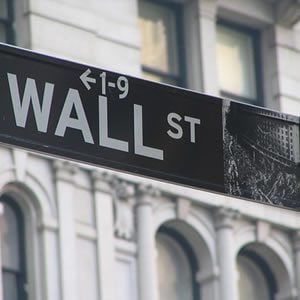
The British Startups’ guide to the Concrete Jungle
In his first column for Tech City News, Tak Lo compares his experiences between London and the Big Apple and introduces us to the booming New York tech scene
A little more than two months ago, I went from founding a London-based startup that pitched to the TechStars NYC final selection meeting to working with TechStars NYC directly as an Associate. And in my time here, I’ve grown to love the teams I work with directly – Sketchfab, Klooff, and weeSpring – and to embrace their challenges as my very own.
But the transition from London to NYC hasn’t been easy, funnily enough. As an American that’s spent almost four years in London, there were cultural differences that I had forgotten about, cultural references that I had missed. And the way of doing business was slightly different than what I was used to.
So in case there are British startups out there that are thinking of relocating or opening offices in NYC, here are a few pointers about the NYC ecosystem that I’ve learned in my time here. I’m hoping that bit by bit, column by column, I can shed a bit of light into what makes NYC a great ecosystem.
 1. The Players
1. The Players
Reputation-wise, NYC has been known as a hub for media, advertising, or finance companies, and the largest venture-exits that the city has seen echo that trend (including the most recent $1.1bn acquisition of Tumblr by Yahoo).
Not to say that other companies cannot thrive, but if there is a certain bias this is it.
Something to think about when deliberating whether NYC is truly your best city to relocate.
 2. Show Me the Money
2. Show Me the Money
By far the biggest surprise about the NYC ecosystem is the breadth of the investor base. There are a multitude of the name brand firms out here – Union Square, RRE, First Round, FlyBridge, Lerer Ventures, First Mark, and Bessemer among others – and all are very positive in supporting the local ecosystem. Large and growing angel groups such as New York Angels and others also dominate the scene, which help bridge that funding gap to institutional money.
According to the Startup Ecosystem Report in 2012, NYC has a higher proportion of funding density than almost any other locations other than Silicon Valley. The PricewaterhouseCoopers National Venture Capital Association MoneyTree Report states that in 2012, the New York Metro area accounted for roughly 9% of all venture capital funding in the US and 11% of deals reported in 2012, only slightly behind the New England region at 12% and 12%.
So be prepared to talk about business/revenue models at an earlier stage. Make sure you can talk through your unit economics, scaling, and can model reasonable projections. The point isn’t to have a full-scale financial model completed (because that would be pointless), but to have reasonable answers for investors.
 3.Fancy Meeting you Here
3.Fancy Meeting you Here
New York loves to meet. You can literally meet anyone, with a warm introduction, for a cup of coffee or early drinks, either for 30 minutes or an hour. In my time here, I’ve been rarely turned down for a meeting, and even when I was it was quickly rescheduled for some other time. In fact, networking does seem to be a game here – the more connected and the more contacts you have, the more legitimate you hare.
Coffee chats are the most simplest way to meet (and can start at 8 AM), with early evening drinks another opportunity.
4.Harder, Better, Faster, Stronger
NYC is literally, a 24 hour city. The subway doesn’t close (albeit it has more limited service in the wee hours of the night) and the minimum cab fare is $2.50, which makes for relatively inexpensive travel. And in line, food options are generally plentiful all night long, from 24 hour diners, pizzerias, drug stores, and even supermarkets.
What this means literally is that people can work longer and harder than anywhere else, and they do. It’s not uncommon to leave work at 6 PM, head to networking drinks or a startup event for a few hours, grab dinner, and then head back to the office for a few hours of work. And with food delivery services like Seamless and Grubhub, there’s more excuses to stay in the office and continue working instead of walking just 5 minutes to get food.
image credits: flickr/laughingsquid/wikimedia commons


 1. The Players
1. The Players 2. Show Me the Money
2. Show Me the Money 3.Fancy Meeting you Here
3.Fancy Meeting you Here